The Hokuriku Shinkansen Line was recently extended to Fukui Prefecture in March 2024. Fukui Prefecture is probably known to many people as Japan's leading "Dinosaur Kingdom" through promotional and other activities by the prefecture. The author collected information about the latest research landscape on dinosaurs, Fukui's top brand, about which a series of hot topics caught the public's attention this year.
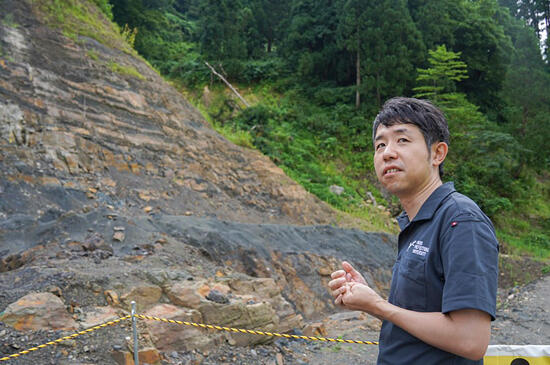
One of the world's three largest dinosaur museums, along with those in Canada and China
Katsuyama City is located in a mountainous area about an hour from Fukui City, the prefectural capital of Fukui Prefecture. The "Fukui Prefectural Dinosaur Museum" is located in this city, which is the heartland of the dinosaur kingdom. The city was referred to as the "heartland," not just because the museum is located there. It is also because all of the new dinosaur species with places in Fukui Prefecture as part of their names, such as "Fukui," have been excavated in Katsuyama City.
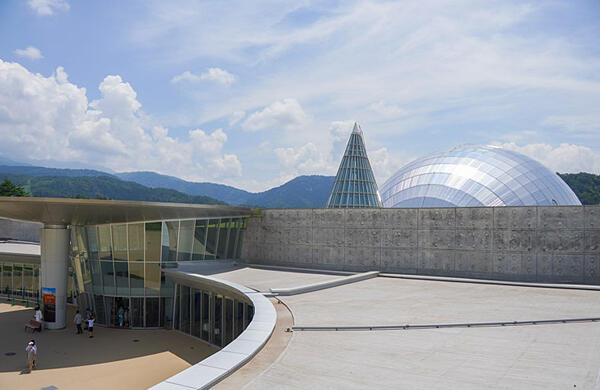
The museum buildings were designed by the late Kisho Kurokawa. Opened in 2000, the museum is one of the largest geology/paleontology facilities in Japan, with exhibitions focusing on dinosaurs. This is considered one of the three largest dinosaur museums in the world, along with facilities in Canada and China. As of the end of last fiscal year, a cumulative total of over 13 million people had visited the museum. The museum underwent a major renovation with expansion in 2023 in anticipation of the extension of the Shinkansen Line. This fiscal year, the museum is fully prepared to achieve 1 million annual visitors, which has been a long-cherished goal since its opening.
On the day of the interview, a surprisingly large number of tourists visited in the morning.
Kitadani Dinosaur Quarry, where all new species were found
The author first visited the excavation site in Kitadani-cho, Katsuyama City. It is where all new dinosaur species were excavated, and the area surveyed by fiscal year 2011 has been designated as a natural monument. It is part of the "Field Station (Dinosaur Quarry)" attached to the Dinosaur Museum and is a very popular spot for the public because visitors can participate in short tours during which they can have a hands-on experience of excavating fossils from rocks cut from this site.
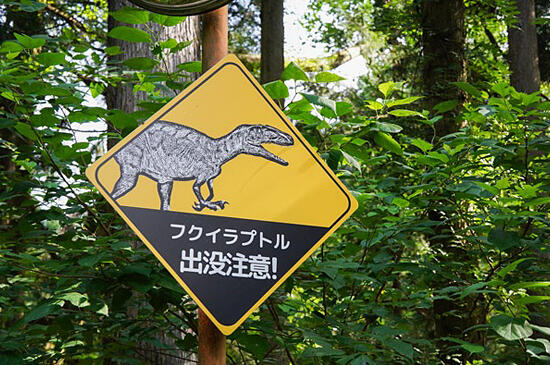
The author visited at the height of summer. When they were puzzled by the swarms of horseflies flying around the car, Imai laughed and said, "There are bears around here, too." The world-class Kitadani excavation site is located in a remote, deep mountain valley where the population is overwhelmingly dominated by animals and insects.
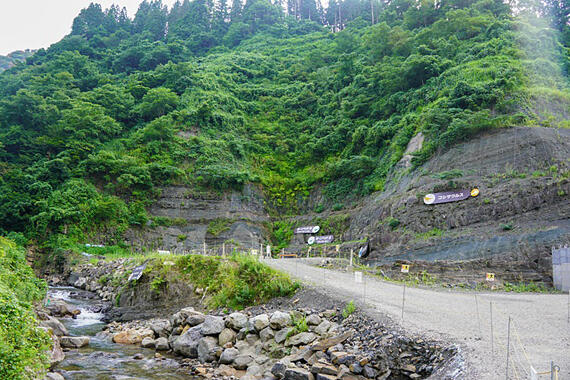
At that time, this location was a meandering river zone on the eastern margin of the Asian continent. This topography was created by the action of the Sugiyama River running through the valley, which cut into the mountain. The site has long been popular among local enthusiasts because shell fossils and other fossils have been found in the outcrops of strata. The situation changed when Mesozoic crocodile fossils were found in 1982. After a trial excavation conducted in 1988 as a project of Fukui Prefecture, the full-scale excavation began in 1989 and continues to this day.
A total of six new dinosaur species have been discovered so far, starting with Japan's first new species, Fukuiraptor, in 2000. Many of the fossils being studied are expected to be new species. Other valuable fossils have been unearthed one after another, including the new primitive bird species Fukuipteryx, mouse-like mammals, shellfish, five cockroach species, and one of the oldest Chinese softshell turtles.
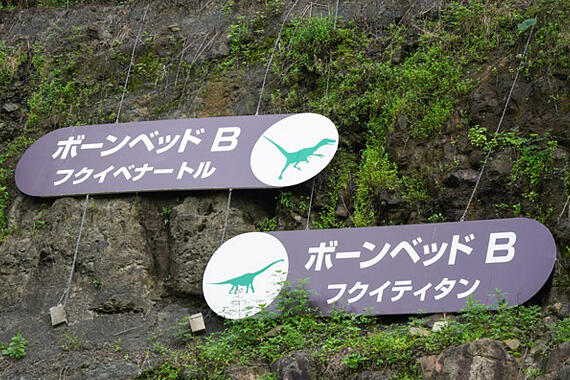
The dinosaurs are found mostly in geographical strata called the bonebed layers in a concentrated manner. The author could not hide their excitement upon seeing the site where they had lived across 120 million years as close as just a few meters away. The next excavation plan is being prepared for application, and the author is very much looking forward to more great discoveries.
Nondestructive analysis using industrial computed tomography (CT) scanners
The author left the Kitadani Dinosaur Quarry and headed to the museum's main building, where the excavated materials are exhibited and stored. The museum exhibits well over 1,000 specimens, including 50 dinosaur skeleton specimens from Japan and other countries, as well as specimens of new dinosaur species excavated in Fukui Prefecture. The exhibits are nothing short of spectacular. Restraining the urge to dwell on them, this article introduces the research being conducted in Fukui Prefecture.
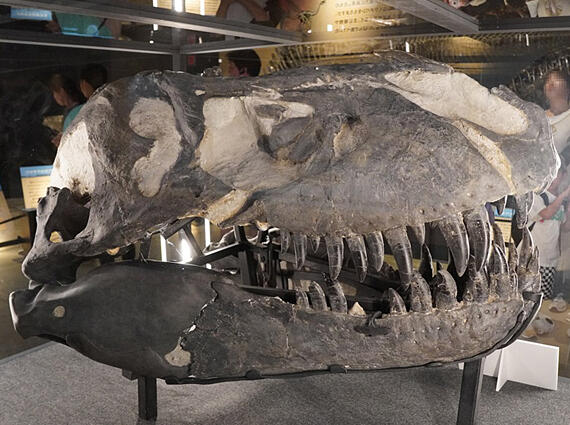
(Processed by the Science Portal Editorial Office)
Imai and other dinosaur researchers in Fukui Prefecture have recently been focusing on "digital paleontology." In addition to the traditional approach of comparing and examining fossils based on their external characteristics, this method makes full use of digital tools such as industrial CT scanners and computer graphics and is being used worldwide. For example, CT scanners can be used for nondestructive and straightforward analysis of the internal structure of fossils, which could not be examined previously without breaking them.
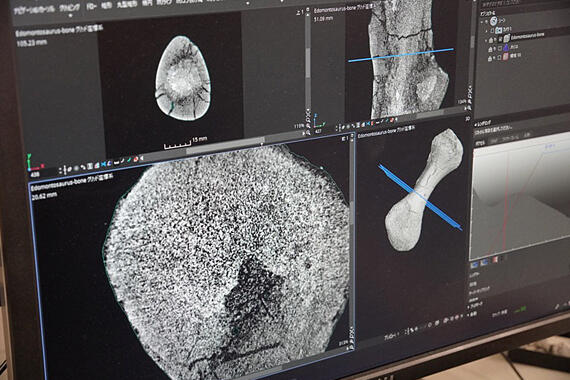
Various results have already been obtained. In the case of Fukuiraptor, for example, a CT scan of growth lines of a remain revealed last year that it was a young individual aged about 4 years (the life span of allosaurids like Fukuiraptor is considered to be about 22−28 years).
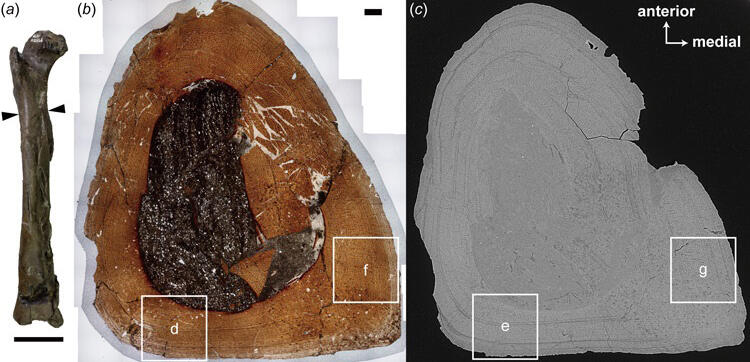
Provided by Fukui Prefectural University
Breaking through the impasse with high-precision SPring-8
The abovementioned results were produced in collaboration with SPring-8, a large synchrotron radiation facility located in Hyogo Prefecture. The growth line analysis conducted originally with the general industrial CT scanner owned by the university was difficult due to precision issues. However, the analysis was made possible by the power of high-energy X-ray CT scans available at SPring-8.
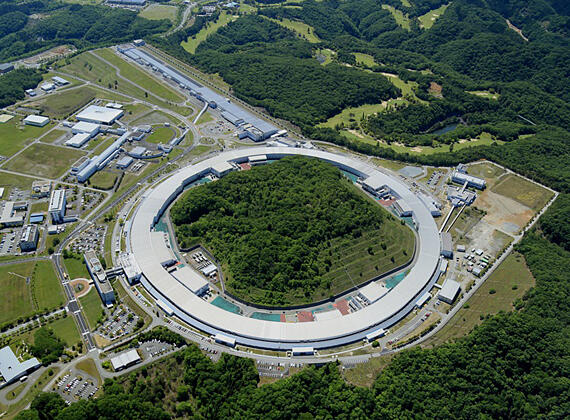
Provided by RIKEN
It all started with a poster presentation at a scientific conference. Fukui Prefectural University approached SPring-8 to initiate the collaboration when they learned that SPring-8 could be used for fossil analysis. The first subject was a fossil of Fukuipteryx. When it was excavated, the fossil of Fukuipteryx was surrounded by tightly attached rocks, which were difficult for human hands to remove. This problem led their study to an impasse.
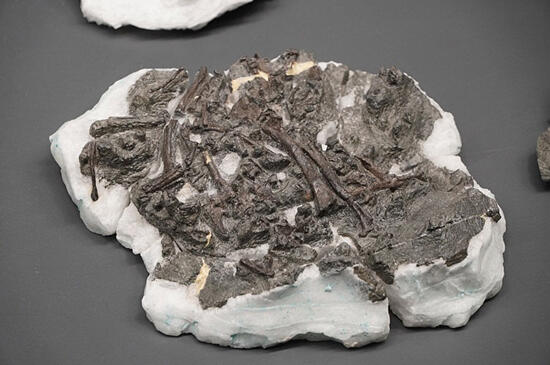
The high-precision CT at SPring-8 was the key to getting out of the impasse. It was the first challenge for both groups, but they successfully obtained three-dimensional data of the buried fossil parts. The impasse was broken through, and Fukuipteryx was approved as a new species. They also found many similarities with feathered dinosaurs, which are considered to be the ancestors of birds, showing that Fukuipteryx falls into a very primitive category of birds.
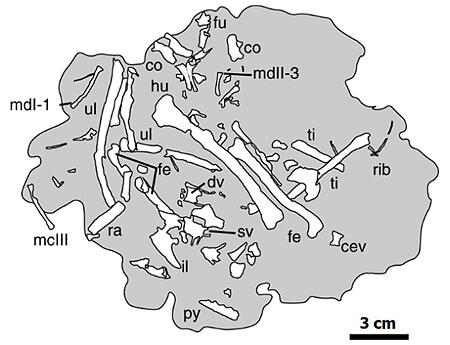
Provided by Fukui Prefectural University
Through this collaboration, Fukui Prefectural University has gained a new research method, and SPring-8 is also conducting research to apply the findings. Imai said, "Application of the findings in paleontology to other fields has a significant implication. It will lead to new value of paleontology as an academic discipline," emphasizing the accomplishments.
Early Cretaceous samples valuable in exploring evolution
Digital paleontology is a promising new research approach, but it is not very popular in countries such as the United States, a dinosaur research power. This is because researchers in regions where far more fossils are excavated are accessible to abundant samples for comparison and have no hesitation in cutting fossils to observe cross-sections. It is natural that this concept is fundamentally different from Fukui, where only one individual has been found for all new species.
So, what is the international value of Fukui's dinosaur research, which the more established sites do not have? Imai, with experience of studying in the United States, said, "The Kitadani Formation is an Early Cretaceous stratum, and fossils found there are different in age from those found in Late Cretaceous strata in the United States and other countries. Significantly, a substantial number of samples important in evolutionary research have been excavated."
He added, "Japan in the Early Cretaceous was connected to the Eurasian continent by land, so it can be said that the main production areas in China were far from the coastline. So many fossils from the age of dinosaurs have been excavated in only a few places located directly on the sea, including Fukui, in East Asia."
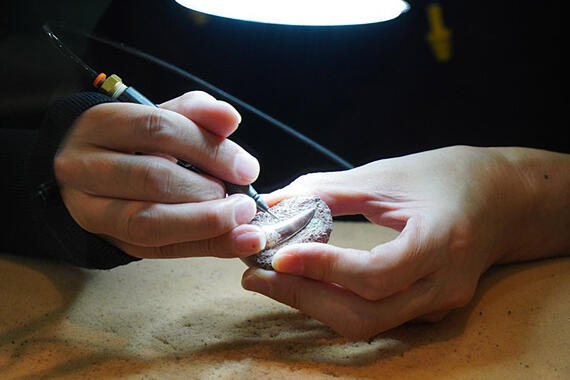
Playing the role of an engine to revive geology in decline
Imai is also actively engaged in outreach efforts driven by the Shinkansen extension. In March, he held an event at Gransta Yaesu in the basement of Tokyo Station, which drew more than 1,200 people in four days. In late October, he also exhibited and spoke at "Science Agora," a science forum organized by the Japan Science and Technology Agency (JST).
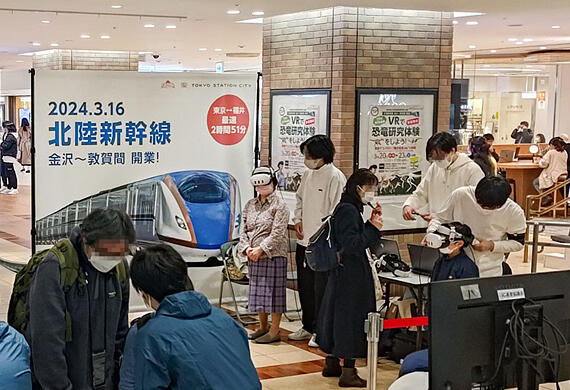
Provided by Fukui Prefectural University, processed by the Science Portal Editorial Office
The primary purpose of his activities is, of course, to attract visitors to Fukui Prefecture and arouse people's interest in the dinosaurs there, but he has another motivation as a researcher. It is a sense of crisis that the geology field is in decline. Imai fears that if geology, which is a foundation of dinosaur research, falls into disuse, there will be no future for dinosaur research in Japan.
"Likely reasons include the unpopularity of elective subjects in university admission examinations and lower expectation for monetary profits than those in applied sciences such as engineering. Geology, however, is the fundamental study of life on earth. This is why people should value geology and not focus on the obvious value in entrance examinations or industry."
Under these circumstances, Fukui Prefectural University will newly establish the "Faculty of Dinosaur Paleontology" in fiscal year 2025. As the name suggests, this is the first undergraduate program in Japan to offer education focusing on dinosaur research. The admission quota for the first fiscal year will be 30 students. While the new faculty is, of course, aimed at advancing dinosaur research in Fukui Prefecture and developing human resources, Imai has high hopes that it will also play the role of an engine to revive geology.
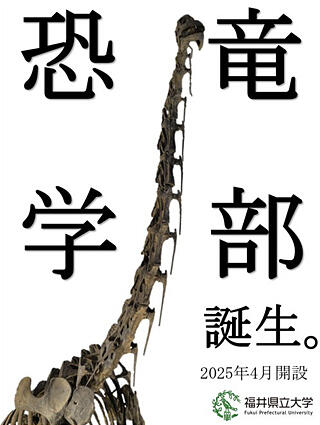
Provided by Fukui Prefectural University
To be established as a center for paleontological and geological research
Hiroshi Nishi (Head/Professor of the Dinosaur Research Institute), the dean-to-be, explained the background to this bold decision, including the direct naming. He said, "The 'Dinosaur' is a symbol of Fukui Prefecture. Fukui Prefectural University considered it an important mission to advance dinosaur research and make the results an asset to the prefecture. The university decided to establish the new faculty because we are confident that based on our previous research results, the new faculty will represent Japan as a center for paleontological and geological research."
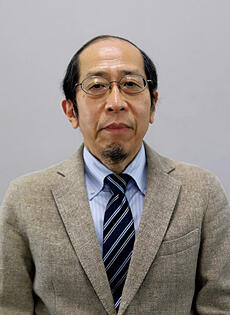
Provided by Fukui Prefectural University
Dinosaurs are a powerful topic with many fans. The author believes that they have somewhat successfully conveyed the message that Fukui Prefecture holds the key to the vicissitudes of dinosaur research in Japan, and hopes that the reader will continue to pay attention to this trend.
(SEKIMOTO Kazuki / Science Portal Editorial Office)
Original article was provided by the Science Portal and has been translated by Science Japan.




